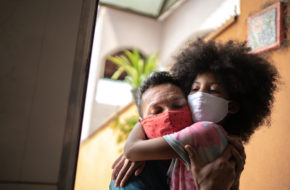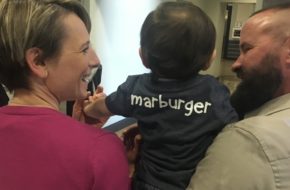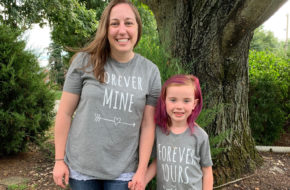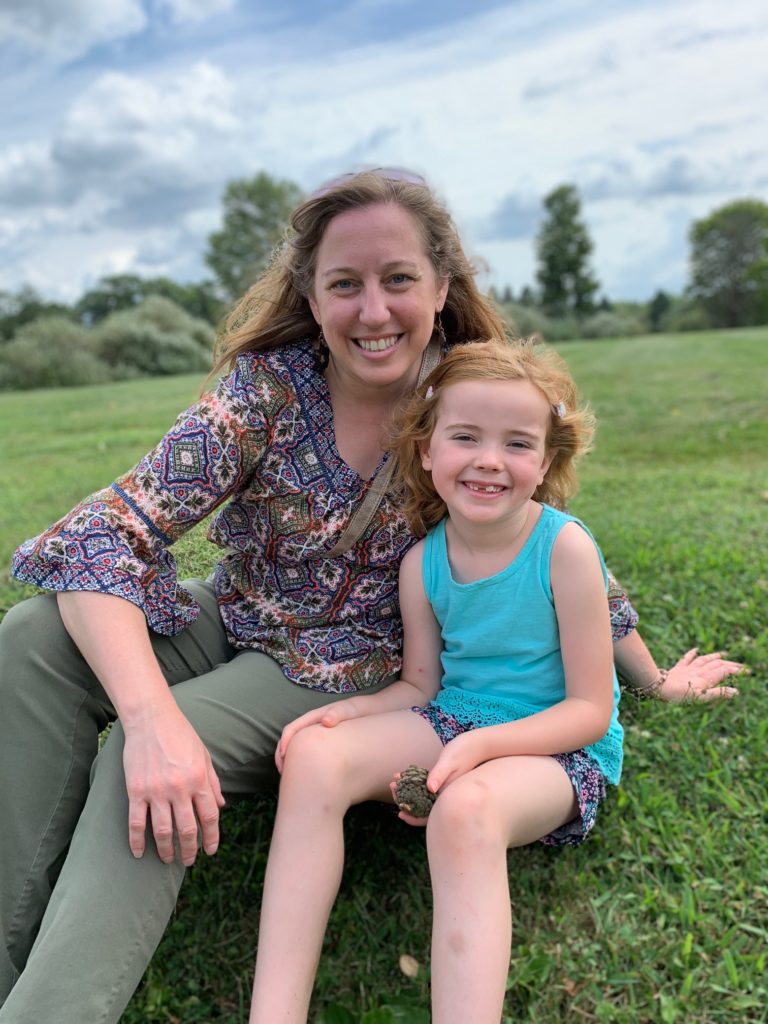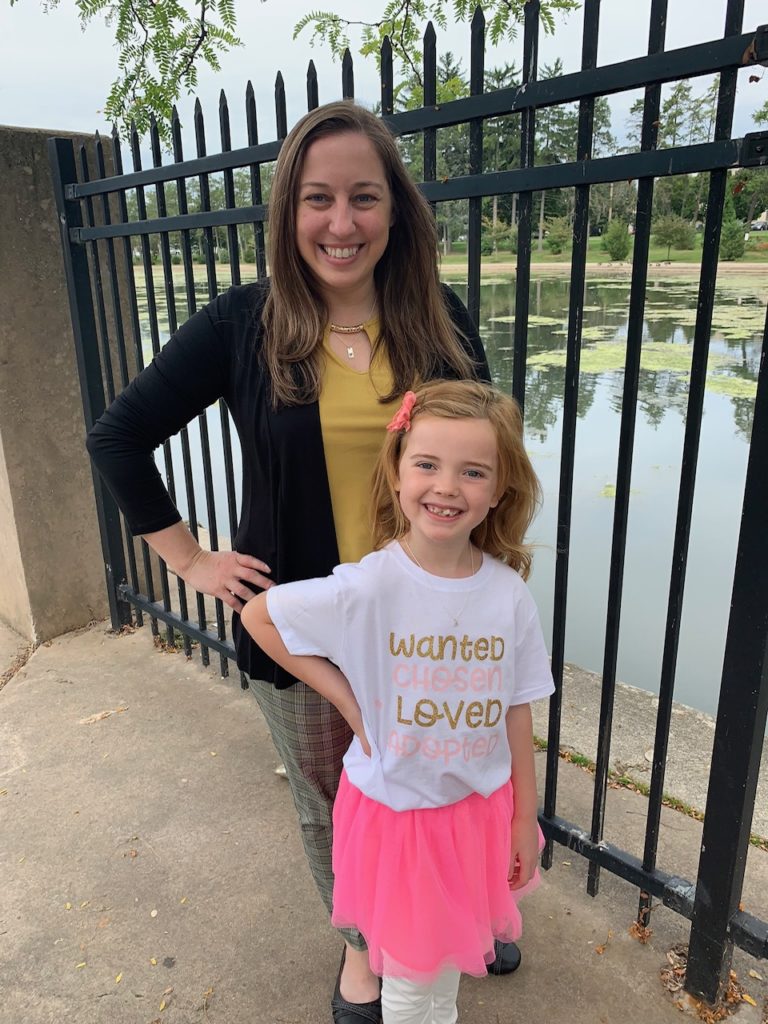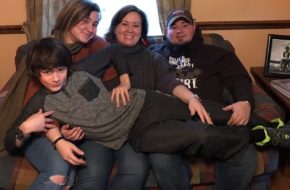I always wanted to be a mom; in fact, when I was younger, I knew I would adopt someday. I just always knew.
When I was 25, I decided I would go to an information night for foster-to-adopt; this was with another organization than Diakon Adoption & Foster Care. I was a teacher at this point and ready to be a mother.
The training was quick and painless and I was approved. But, if you foster or adopt, you will quickly learn that waiting is part of the experience.
Following approval, I said yes to foster-parenting a girl, but was not selected. Before long, however, I was asked to provide a home for a 15-month-old girl on a foster-to-adopt basis. A few weeks later, the exciting part began and I still recall that day 18 years later: A little girl walking in with her social worker. That was followed, however, 20 minutes later by the toddler’s mother coming by with a different social worker.
I was asked if this was okay. My daughter’s birth mother was young and had not seen her in a while. I agreed; I was new at this and was afraid to say no. But the visit went quickly and painlessly and provided me with the opportunity to meet my child’s birth mother in my home. I knew as well that it would benefit my child to see her two mothers interact in my home. Looking back, I am glad I did this.
In fact, my daughter and I got into the swing of our relationship. She had weekly visits with her birth mom. She always went to her birth mom willingly and always left the visits just as happy. At a young age she understood that she had two moms.
But … I was always waiting for an update, always wondering how long my daughter would stay. Would I adopt her … or would she go back to birth mom?
I think that is probably the hardest part of being a foster parent. You are always waiting.
You wait for the call. You wait for any updates. You wait for court. You wait for termination of parental rights (TPR) or reunification. Luckily, you have things to fill in the wait. You are able to watch a child blossom in your house. You get to bond and create a family. It’s a stressful, yet exciting time.
I was lucky. I had to wait only 10 months for TPR. It was granted by yet again I had to wait—this time for 30 days to see if the birth mother appealed. She did and I went through a year of different appeals, making the time seem like the fastest and longest year I’ve ever experienced. The adoption was finalized just before my daughter’s fourth birthday.
I gave myself a break and enjoyed a quiet life without court dates, social worker visits and everything else that accompanies foster care. I decided that I would try private adoption next, thinking it would be easier. Boy, was I wrong!
Although I was told that as a single mother, I would wait longer because a birth mother, not a social worker, would have to pick me, I waited just three months until news came that my son was born, though seven weeks early. I visited him in the NICU for two weeks, during which time his birth mother left the hospital and could not be found. She had not, however, terminated her parental rights!
But the birth father then said he wanted the child; later, he, too, could not be located. TPR was finally granted on grounds of abandonment—one year later!
My life as a mom of two was great. We went about our day-to-day life and I was enjoying not waiting for court dates and phone calls. Six years later, I gave birth to a daughter. I was now a mom to three! And when my youngest daughter was three years old, I decided to try foster-to-adopt one more time—because I wanted to adopt a boy so that my son could experience having a brother.
I also wanted to take part in an older-child adoption. I wanted to help a child who might not be chosen because of age.
I had heard about Diakon Adoption & Foster Care and contacted the program. From the first call to today, I couldn’t be happier.
All of the people at Diakon have been wonderful and helpful. I went through the training and was ready for the call. But waiting is part of the process; this, I’ve come to know.
While I waited for a boy, I was approached about providing for care for a 12-year-old girl facing several challenges. Diakon needed someone to care for her temporarily while a permanent family was found for her … but, three years later, she is another loved part of my family—adopted.
I now had four children but still felt as if something was missing. I still wanted to adopt a boy.
I went back on the list and was called for a five-year old boy. He stayed with us for four months but had behaviors I could not handle. I felt like such a failure. I knew that I could not give him the help he needed. Diakon was very supportive and helped me during this process and he moved to a home with fewer children. I knew that move was best for him, yet I still found the situation among the more difficult ones I have experienced.
Seven months later, I was called about an 8-year-old boy but he soon returned to his home. I knew that was a possibility in foster-to-adopt, but I was still shocked. Three weeks later, I was called about an 11-year-old boy from a large family. I said yes and headed to his county to pick him up.
The experience changed my life forever.
In fact, I experienced many things for the first time with this placement.
First, I learned how much he missed his siblings. The first night home I said to myself, “I should have taken one of his siblings, too.” I learned how important it can be to try to keep as many siblings together as possible.
Second, I had the wonderful experience of connecting with his birth mother. She has had a hard time in life and needed help and support as much as her children. She truly appreciates all the things foster parents have done for her children. So I learned that if you have the opportunity, you should try to connect with your children’s family. In fact, that connection made the placement so much easier.
Because of the support the mother received, the boy was able to return home in a few months. I was sad to see him go yet so happy for him and his family. They had worked very hard to get back together.
Unfortunately, the situation didn’t last and when I was called about the boy again, I asked to care for one of his siblings so that he wasn’t alone.
So here I am today—a mother of six! I don’t know yet what will happen with the boy and his sister. Will they go home? Will they go to a relative? Or will they stay with me?

I am always asked by others: How do you do it? How can you sit and wonder each day if these kids will stay or go?
I tell them that it is just part of the foster-to-adopt process. I get through it with lots of support from adoption staff, social workers and others who are going through the same process. I connect with people who are walking the same walk. I use my Diakon staff worker for support. When I am stressed from all the waiting, I reach out to her. She tries to get me information and supports me.
The key to surviving the wait is to surrounding yourself with people who have done the same thing.
But—all this waiting and risk-taking have given me a family! I have grown as a person through these experiences. And I can truly say all of it has been worth the waiting I have done the last 18 years.
If I had to give advice to those just starting the foster-to-adopt process, I would tell them the journey may well be full of highs and lows. I also suggest thinking outside of the box and being flexible. Everyone goes into this with a specific picture of what you want in a family.
However, be open to expand on that picture.

I also would say to be prepared to be patient. The process can be full of waiting. But it also is full of amazing people who will support you. It is full of children who want to be part of a family. It is full of children who need you for support, love, and safety.
Trust me when I say it is worth the ride.
Stacey
Diakon Adoptive/Foster Care parent
Because we review comments, they do not appear immediately. Please do not submit each comment more than once. Please review our comment policy.

